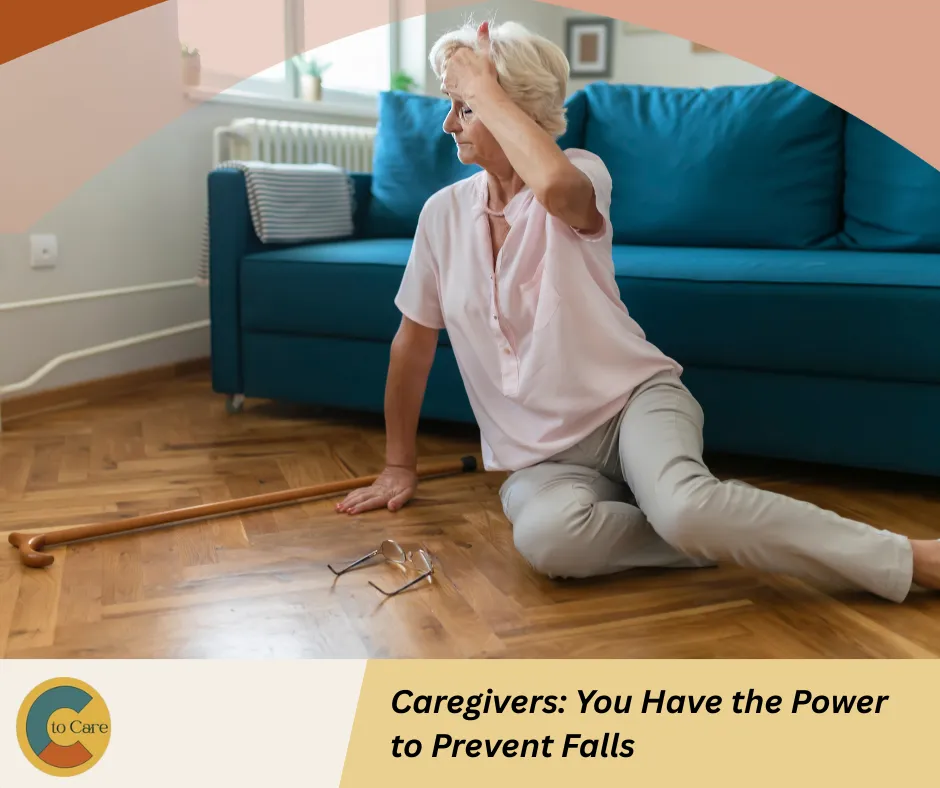
Caregivers: You Have the Power to Prevent Falls
Caregivers: You Have the Power to Prevent Falls
As a caregiver, you wear many hats—advocate, scheduler, companion, and safety officer. Among your many responsibilities, falls prevention may be one of the most critical yet often overlooked aspects of care. The truth is, you have the power to significantly reduce fall risk for both your loved one and yourself.
Why Falls Prevention Matters
The statistics are sobering: one in four older adults falls each year, and every 11 seconds, an older adult is treated in an emergency room for a fall-related injury. These falls can result in serious injuries like hip fractures and head trauma, with the average hospital cost exceeding $30,000 per incident.
But the impact extends beyond physical injury and financial strain. After a fall, many older adults develop a fear of falling that leads them to limit their activities and social engagement, creating a cycle of physical decline, depression, and isolation. For caregivers, research shows that after a care recipient's first fall, caregiver burden, fear of falling, and depression significantly increase.
Here's the encouraging news: most falls can be prevented.
Identifying Fall Risk
Understanding fall risk is the first step toward prevention. Common risk factors include muscle weakness, balance issues, vision changes, medication side effects, and environmental hazards in the home. A simple 12-question checklist can help you assess whether you or your loved one may be at risk—a score of four or more points indicates increased fall risk and signals it's time to take action.
Seven Steps to Create a Falls Prevention Action Plan
Enlist support from family, friends, and healthcare providers who can help you address safety concerns.
Discuss current health conditions openly with your healthcare team, including medication side effects and mobility challenges.
Schedule annual eye exams and ensure prescriptions are current. Simple adjustments, like waiting for tint-changing lenses to adapt when entering buildings, can prevent falls.
Watch for warning signs such as holding onto furniture when walking or difficulty rising from a chair—these indicate it may be time to consult a physical therapist.
Review medications regularly with your doctor and pharmacist, especially when new prescriptions are added. Keep a current list of all medications and supplements.
Conduct a home safety assessment. Add lighting at stairs, install grab bars in bathrooms, remove throw rugs, and clear clutter from walkways.
Explore community-based falls prevention programs like Matter of Balance, Stepping On, Tai Chi, or Stay Active and Independent for Life through your local Area Agency on Aging or senior center.
Falls Prevention Benefits Everyone
Remember, falls prevention isn't just about protecting your loved one—it's about protecting yourself too. One in five caregivers reports high levels of physical strain from caregiving duties. By engaging in falls prevention activities together, you can both build strength, improve balance, and maintain independence.
Taking action to prevent falls is one of the most powerful ways you can support your loved one's health and well-being while safeguarding your own. Start the conversation today, assess the risks, and create your falls prevention action plan. Your efforts can make the difference between independence and injury.
Ready to get started? Contact Connections to Care to learn more about falls prevention resources and support available in our community.